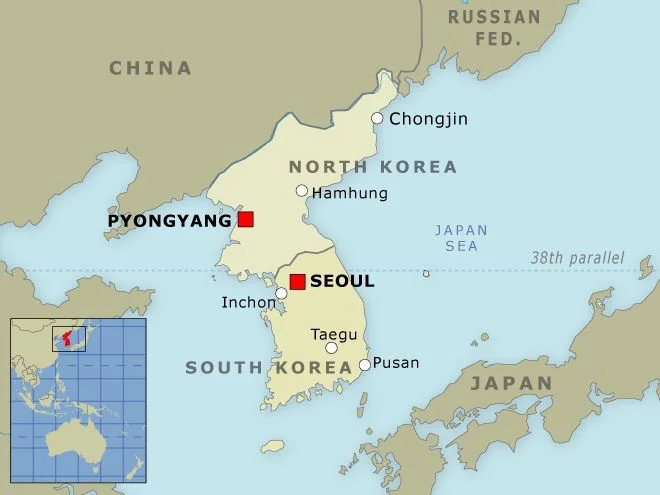The languages of Korea include the language spoken in North Korea and the language spoken in South Korea. Korean is the language of the Korean Peninsula in North-East Asia. Available records are in support the fact that the Korean people arrived on the Korean peninsula and in Manchuria at a time around 4,000 BC.
There are several theories surrounding the affiliation of the Korean language; what makes it difficult to understand compared to other languages are their Chinese and Japanese affiliations.
Read also: Languages of China and Languages of Japan
The Korean Republic has been split into two: North and South Korea. There are 48.5 million speakers in South Korea and another 23.3 million in North Korea. However, the Korean spoken in the two Republics is different from each other. We have another 2.7 million speakers of Korean along with the Chinese Provinces that are around North Korea.

Thanks to the smashing Korean pop hits, web series, and Korean movies, the languages of Korea are gaining popularity lately around the world. There are several speakers of the dialect in the following countries such as Japan and Russia, the U.S., Singapore, Thailand including several other countries.
The Dark Period
It might interest our readers to know that the languages of Korea once suffered a setback. When the land of Korea was occupied, the Japanese language was declared the official language in Korea. The speaking of Korea was banned and the natives were even forced to change their names to Japanese. This occupation ended in 1945 and despite the civil war and divisions in the land; the Korean language was revived.
After the division in 1945 into two Republics, each of them developed its own version of the language policy. As of today, modern Korean is spoken in the two Republics.
The Ancient Korean Dialects
The Ancient languages of Korea are divided into two dialects: Puyo which is the version spoken in Manchuria and northern Korea and Han is found spoken in South Korea. With the unification of the Korean Peninsula in 7th AD, the Han dialect became the dominant dialect. The Han-speaking group unified the Peninsula in 14th AD which led to the spread and popularity of the dialect throughout the Peninsula. This is the reason why modern Korean is based on the Han dialect.
We now have two standard varieties of Modern Korean:
- South Korea is based on the Seoul dialect.
- North Korea is based on the P’yŏngyang dialect.
There are two Korean Republics at the moment; we shall give details based on each of the two Republics in the languages that you will find in each of the Republics for the clear understanding of our esteemed readers.
Language of North Korea (Dialects)
The official language of the Republic of North Korea is Korean and the dialect is based on Munhwaŏ which has a slight variation from that spoken by their neighbors-South Korea. There is a strong immigration law in North Korea which accounts for the tight ethnic or racial diversity in the country.
If we take a look at the variant of the Korean spoken in the North and place it side by side that spoken in the South; the over seven decades of their separation accounts for the disparity between the dialects spoken in the two republics.
The Pyongan Dialect
This dialect influenced the modern Korean spoken in the Republic. It is the dialect spoken in Pyongyang, the province of Chagang in North Korea, and the Chinese province of Liaoning. The various terms used in this dialect are different from other Korean dialects and it features an eight vowel system.
Gyeonggi Dialect
Of all the Korean dialects, this is considered the most prestigious among them all. This dialect is spoken in the city of Kaesong, as well as Changping and Kaepung counties. This language is common in the Seoul National Capital Area as well as in the larger Gyeonggi province.
Munhwaŏ Dialect
If you are asked a question about the standard variant of the Korean language spoken in North Korea, the answer to that is Munhwaŏ Dialect. The ascendancy to prominence of this dialect happened in 1966 when it was embarrassing as the standard language. Upon this action, Pyongan Dialect was used as the basis for Munhwaŏ.
South Korea
The Gyeonggi dialect is the basis of the official Korean language recognized in South Korea. This is the dominant language in Seoul National Capital Area which includes the Incheon and Seoul Cities together with Gyeonggi Province.
The Jeju dialect
This is different from the dialect used in the mainland of South Korea and it is referred to as the language of the locals. It is spoken in South Korea’s Jeju Province. This language is majorly used by the older generation of South Koreans.
Language of South Korea (Dialects)
Gyeongsang dialects
This is yet another dialect in South Korea and it is used by communities that are found in the Yeongnam region. This dialect is different from standard Korean
Jeolla dialect
This dialect is majorly used in the Honam region including the Gwangju region.
Chungcheong dialects
You will find this dialect in use in the Chuncheong region as well as in Daejeon City.
Other Popular Languages Spoken In South Korea
English Language
The South Korean Republic opened up to the outside world after the end of the Korean war. English is now promoted as a second language and it is been supported through government initiatives. However, the English spoken here has a strong Korean accent.
The Japanese Language
This is a language that is found among the older generation of Koreans. The speakers are clustered around Busan which is a short distance from the Japanese city of Fukuoka.
Why The Disparity Between The Versions Spoken In The North And The South?
One might begin to wonder why the difference in dialects between the two Republics was once a single Republic. The reason is based on ideological differences between the two of them. While the North is a little flexible; the South decided to hold rigidly to the originality of the Korean language.
The names used in the South are the ones found in the Hunmongjahoe. The names used in the North are formed mechanically with the pattern.
For the North, there is room for what they called: “the speech of the working class”. This speech involves the introduction of certain terms that the Southern counterparts considered as not standard. That is responsible for the disparity that we have in the Korean spoken in the North vs that spoken in the South.
Read also Studying in Korea with a Scholarship.
